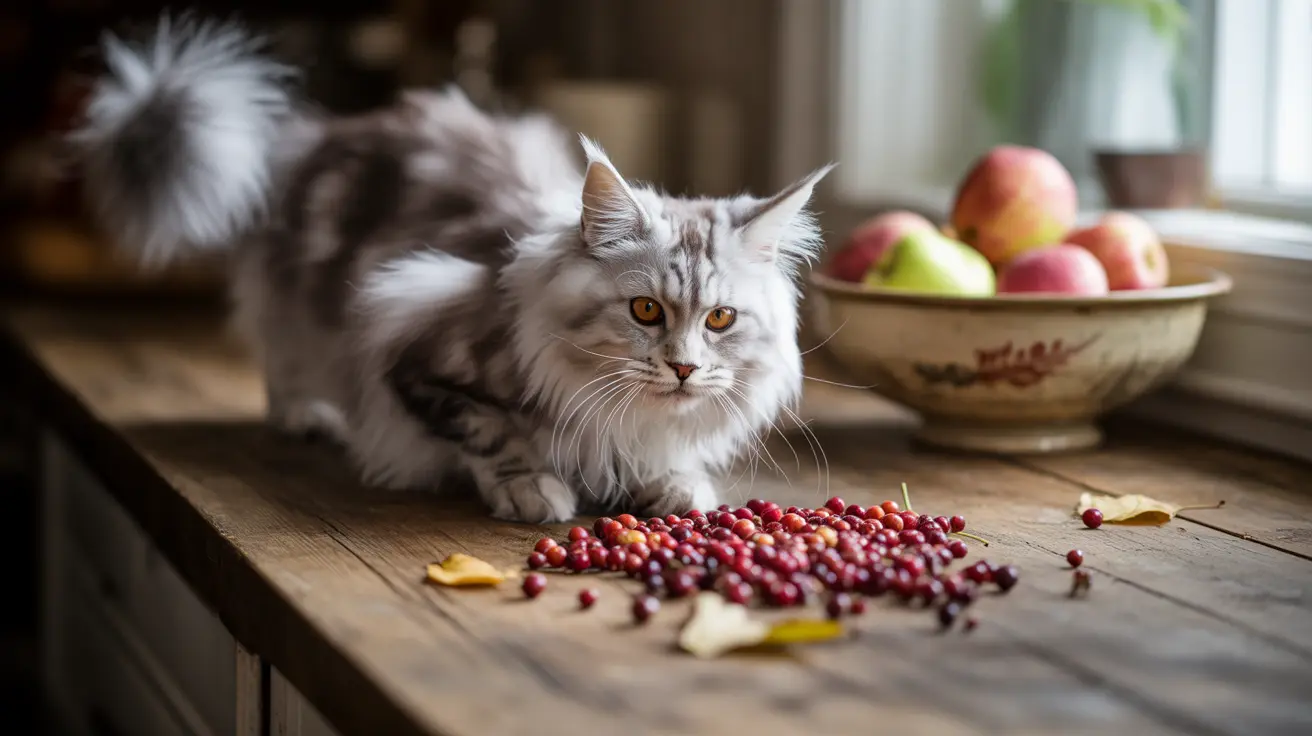Safety Guidelines for Feeding Cranberries to Cats
Plain, fresh cranberries are generally safe for cats when offered in moderation. However, portion control is essential - cats should only receive a few small pieces at a time, cut up to prevent choking hazards. Remember that treats, including cranberries, should never exceed 10% of your cat's daily caloric intake.
It's crucial to avoid processed cranberry products such as:
- Cranberry sauce
- Cranberry juice
- Sweetened dried cranberries
- Cranberry supplements
These items often contain added sugars, preservatives, and other ingredients that can be harmful to your cat's digestive system.
Potential Benefits of Cranberries for Cats
While not nutritionally necessary for cats, cranberries do offer some potential benefits when fed appropriately:
- High water content (90%) supporting hydration
- Natural source of vitamins A, C, and K
- Contains minerals like iron and magnesium
- Rich in antioxidants
- May support urinary tract health (though evidence is limited)
Understanding the Urinary Health Connection
While cranberries are often associated with urinary tract health, scientific evidence supporting their effectiveness in cats is limited. The proanthocyanidins in cranberries may help prevent bacteria from adhering to bladder walls, but this shouldn't be relied upon as a treatment for urinary tract infections.
Always consult your veterinarian for proper diagnosis and treatment of any urinary issues rather than attempting to treat them with cranberry products.
How to Introduce Cranberries to Your Cat
When introducing cranberries to your cat's diet:
- Start with a tiny amount (one small piece)
- Monitor for any adverse reactions
- Only offer plain, fresh, or unsweetened dried cranberries
- Cut larger pieces into cat-appropriate sizes
- Observe your cat's interest and acceptance
Signs of Cranberry Sensitivity to Watch For
Monitor your cat for these potential adverse reactions:
- Digestive upset or diarrhea
- Vomiting
- Loss of appetite
- Unusual lethargy
- Changes in urinary habits
If any of these symptoms occur, discontinue feeding cranberries and consult your veterinarian.
Frequently Asked Questions
Can cats safely eat plain cranberries, and how much should I give them?
Yes, cats can safely eat plain cranberries in small amounts. Offer only a few small pieces at a time, cut up to prevent choking. Limit treats, including cranberries, to no more than 10% of their daily caloric intake.
Are cranberries beneficial for my cat's urinary tract health?
While cranberries contain compounds that may support urinary tract health, scientific evidence in cats is limited. Never use cranberries as a replacement for veterinary treatment of urinary issues.
What cranberry products should I avoid feeding my cat?
Avoid cranberry sauce, juice, sweetened dried cranberries, and supplements. These products often contain added sugars, preservatives, and other ingredients that can be harmful to cats.
How can cranberries help with hydration and nutrition for indoor cats?
Cranberries are about 90% water and contain various vitamins and minerals. However, they should only be considered a supplementary treat and not a primary source of hydration or nutrition.
What signs of adverse reactions should I watch for after feeding my cat cranberries?
Watch for diarrhea, vomiting, loss of appetite, lethargy, or changes in urinary habits. If any of these symptoms occur, stop feeding cranberries and consult your veterinarian.
Conclusion
While cats can have cranberries as an occasional treat, they should never be considered a dietary necessity. Always prioritize a balanced, meat-based diet for your feline friend, and consult with your veterinarian before introducing any new foods into their routine. Remember that plain, fresh cranberries are the only safe option - avoid processed cranberry products entirely.






